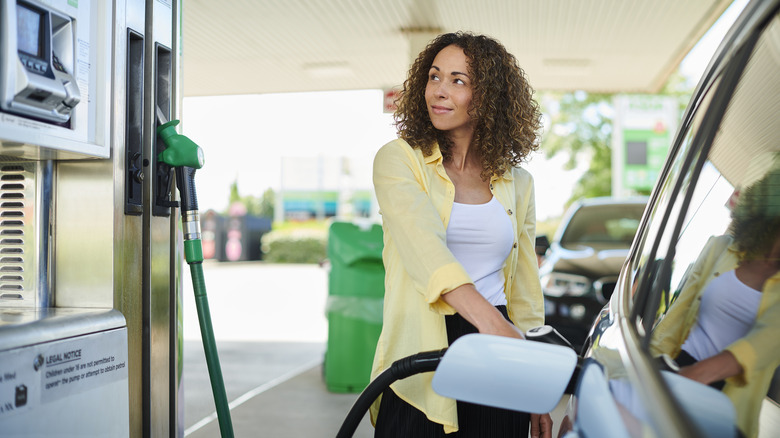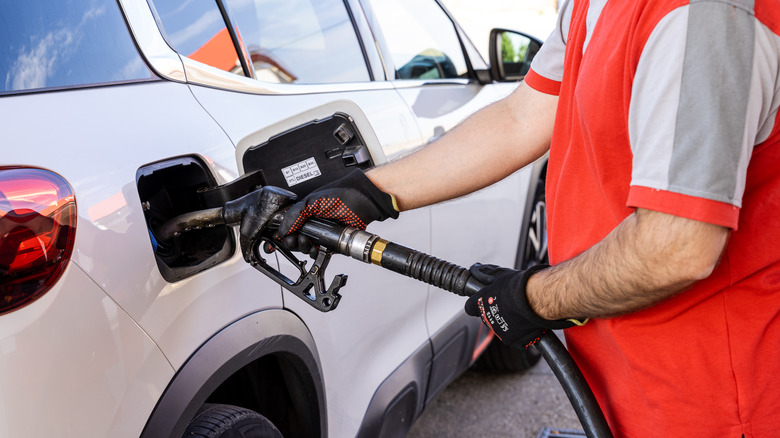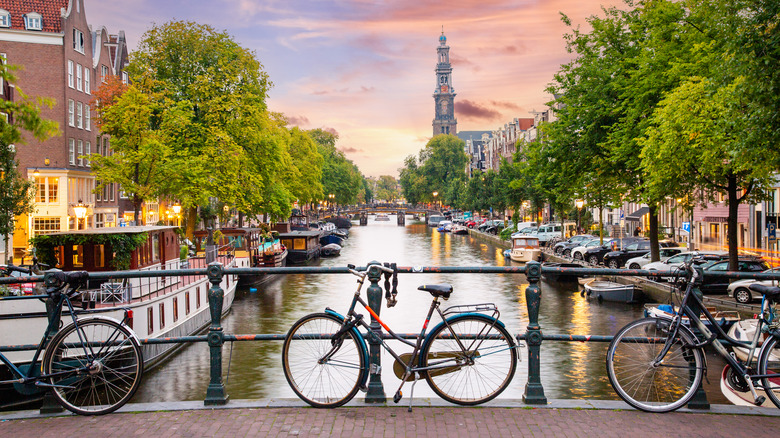American Tourists Are Often Shocked By One Big Difference With European Gas Stations
What kind of things shock American tourists when they first visit Europe? Is it the small food portions? Or perhaps it's the European bathroom feature that's got Americans obsessed. It's probably both of those facts plus heaps more. But another thing to add to the list is to do with gas stations. There's one big difference that's surprising American tourists in Europe.
@misscaramaria I mean. WHAT?!!! #ireland🇨🇮 #irelandtiktok #irelandvsamerica #theirish
TikToker @misscaramaria posted a viral video explaining that in Ireland, you fill your gas tank, and then you pay for the fuel. Her comment section is full of people from all across Europe, as well as other places like Canada and Australia, saying that it's the same in their countries. Pump your gas and then pay. In the U.S., as many of our readers will know, it's the other way around. You pay and then you fill. (Europeans are often equally shocked when they get to the U.S., try to pump gas without paying first, and find nothing comes out.)
What's different about European gas stations?
In Europe, you can typically fill your gas tank and then pay afterward, though other ways to pay exist. In many places, you can pay at the pump by inserting your card before you fill up. To do this, you'll usually need a card with a chip and PIN. This might be the only way to pay at some gas stations, especially at night. Otherwise, as long as the gas station has an attendant, you can pay inside after you fill up. In some countries, an attendant will pump your gas for you, and they may also be able to take your payment.
One thing you may already be anticipating if you're heading to Europe is the price of fuel. We can't deny that fuel is much more expensive in most of Europe than in the U.S. One gallon generally costs between $6 and $8+, with Denmark, Iceland, and the Netherlands all selling gas for over $8 per gallon. (The price is displayed in liters in Europe so as not to scare Americans away. There are approximately four liters to a gallon.) In many European countries, including the U.K. and France, supermarkets sell fuel, and it's often cheaper than buying from regular gas stations.
The cost of fuel shouldn't put you off driving, though. European countries are smaller than the U.S., and you can save by choosing a fuel-efficient rental car. You could also try our driving hack that saves money on road trips.
More transportation differences in Europe
There are many other things that American tourists find shocking about transportation in Europe. One aspect mentioned by basically every American who sets foot on the continent (we're only exaggerating slightly) is how good public transportation is. Trains and buses are frequent, safe, and usually not too expensive. In fact, bus travel can be an extremely cheap way to get around Europe.
Another thing that surprises some Americans is how many people get around by bike. In the r/AskReddit forum, u/Jockelson wrote about their American girlfriend's shock at seeing rows of bikes parked outside the train station in the Netherlands. The walkability of European cities also grabs many Americans' attention and Americans are often surprised at how much walking they do when in Europe. Sneakers are definitely the best shoes to pack for your European vacation.
Finally, let's swing back around to cars because Europeans do drive. They just don't drive the same kinds of vehicles as many people in the U.S. Often, European cars are far smaller than Americans are used to. But you don't want to drive an enormous pickup truck on Europe's narrow roads or fill that huge truck with Europe's expensive fuel. When in Europe, lean in to tiny cars, paying for gas after you fill up, riding bikes, and the simple pleasures of walking.


